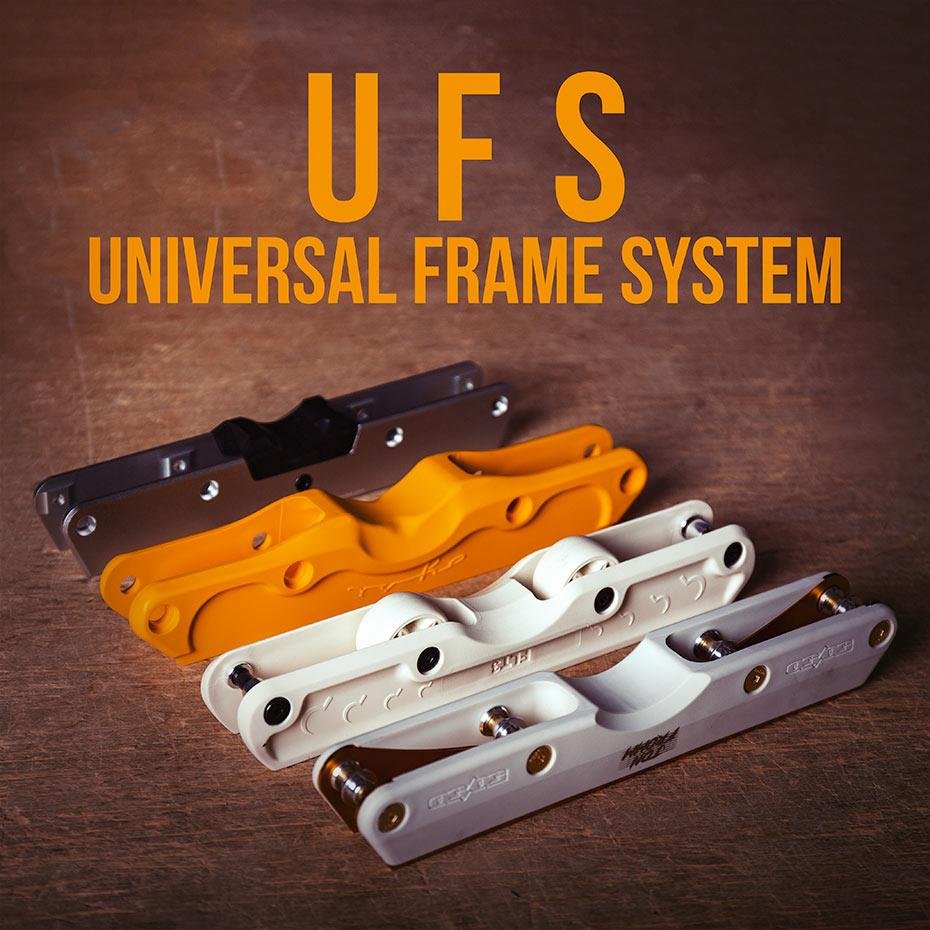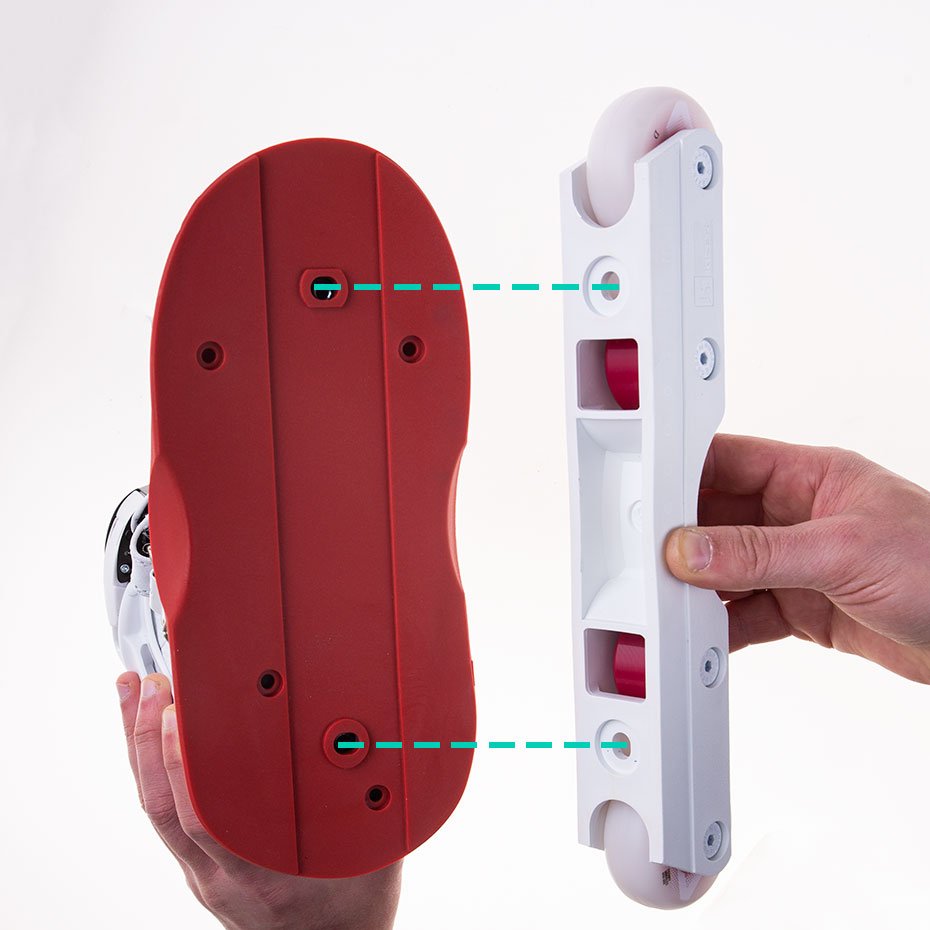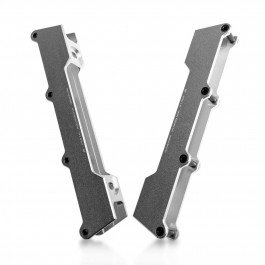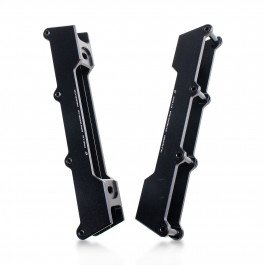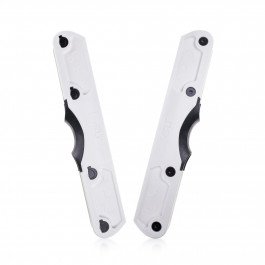UFS (Universal Frame System) is a frame mounting standard commonly used in aggressive skates. Created over two decades ago, with the aim of unifying the method of connecting a frame with a boot of an aggressive skate, allowing people to easily use different frames on different boots. What is the UFS standard, why are we still using it, and will we be still using it in the future?
A little bit of history...
Before the UFS standard was introduced, each manufacturer offered its own frame mounting patents. At the beginning, in most cases, the frame was fixed "permanently" with a dozen or so rivets (Rollerblade, Roces), just like in the case of ice skates. It was very rare to replace frames in skates back then - after they were worn out, you just had to look for complete new skates. With the development of aggressive skating, the needs of skaters began to increase - the necessity of replaceable frames quickly arose. Brands gradually began to introduce new solutions - frames connected to base plate (K2 Fatty) or one-piece "soulframe" (Roces and the first 5th Element models).
To meet the expectations of the then rapidly developing sport, new companies have emerged. However, without an unified standard, it was quite difficult for them to adjust the offer of products to inline skates available at the time. Therefore, what they came up with were rather demanding methods of mounting using rivet holes (you had to drill out rivets first!), such as Senate frames (which discouraged 99% of skaters from this type of procedure) or the sale of frames with special adapters (e.g. Fifty / 50 frames, where each skate model required its own dedicated adapter, like famous Juice system). Fifty/50 adapters reception by the scene was very warm, mainly due to the fact that they "widened" the soulplates significantly. In addition the soulplate in skates became flat along their entire length (previously the "heel" in the shell was significantly raised).
Who came up with the UFS idea?
1999 was a key moment in the matter of mounting systems. Aggressive skates experienced the biggest boom yet - leading companies (Salomon, USD, Razors, Kizer, 7XL / Able, Fifty / 50) to come to an agreement - aggressive skates must have a flat bottom / soulplate (which allowed to place a thicker anti-shock under the heel, inside the shell) and a flat frame channel for easy installation / replacement. This is how the UFS standard was born. Detailed specification of UFS mount:
Distance between holes for mounting bolts:167mm
UFS hole / slot diameter - 20mm
UFS slot depth: 3mm
Frame width: 41 mm
Frames are mounted to the shell with two mounting bolts (UFS bolts).
The UFS does not define the length of the mounting bolts (UFS bolts) - their length may vary depending on a skate brand
The UFS system does not define the length of the frame - any UFS frame size will fit any UFS compatible skate
UFS or die!
The first UFS standard frames appeared in 2001 together with the first compatible skate - Salomon Pro Arron Feinberg model. Since then, each new aggressive skate model (well, of major brands) launched on the market complied with the before-mentioned standard. The idea "caught on" - the market offer of UFS products was systematically growing. Everyone had the option of choosing frame according to their preferences, and the first "Boot Only" skate variants were offered to customers. In our opinion, it was the UFS system that started the era of "skate customization".
Disadvantages
The UFS system started at the height of the popularity of the Anti-Rocker / Freestyle setups, which remained a relatively stable trend for many years. Because people didn't care about ability to mount 4 wheels of one size in a frame (yet), a problem that characterizes the UFS system was not really obvious at first - the limitation of the maximum distance between the middle wheels. Middle wheels would rub against the UFS mounting bolts if the split was too wide - a taller frame is needed to overcome this. Flat setups, which were returning to favor, greatly highlighted this fact.
Thus, manufacturers started to look for a new solution. A good example of a 'cure' for the position of the middle wheels in UFS frames are the previously described Oysi frames, a design which allows for flat skating on 72mm outer wheels (the middle wheels are smaller but mounted in lower position) while keeping the low height of the frame.
The future
Will UFS stay with us for a foreseeable future? It will definitely not disappear immediately - it is still a great and simple design that works well for specific situations or setups. Brands such as Oysi, Symmetrics prove that there is still a lot to come up with in this field. Nevertheless, new approaches such as the Uni-body concept in USD Aeon skates or the recently popular idea of Soulframe (one-piece soulplate frame) show how much can be improved!


